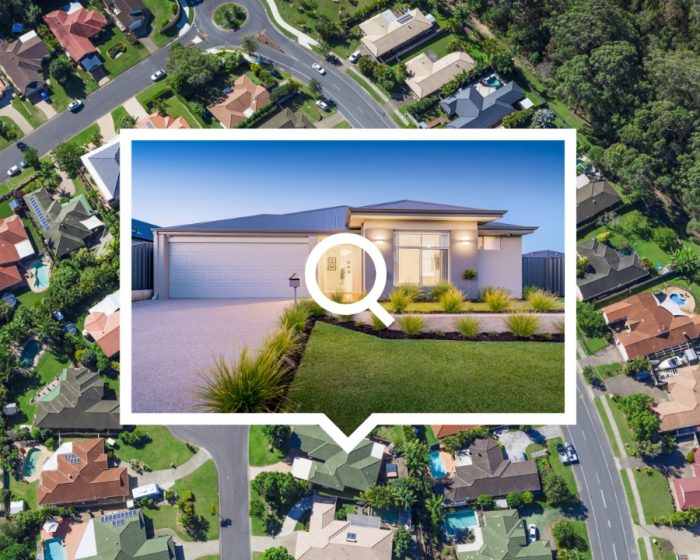2026 Feasibility Tune-Up: The New Numbers You Can’t Ignore

Why Your 2025 Feaso Doesn’t Cut It in 2026
If you haven’t updated your feasibility spreadsheet in a while, you might be working off a false sense of security.
Markets shift quietly. Lending policies evolve. Material prices settle in some trades and spike in others. Even the smallest change in one cell can wipe out your margin if the rest of the sheet hasn’t caught up.
That’s why every active investor and developer I work with is running a feasibility tune-up right now.
It’s not about finding problems, it’s about staying sharp.
Whether you’re carving up land through subdivision or building townhouses, your numbers need to match 2026 realities, not the assumptions that got you through 2022 or 2023.
Step 1 – Start With the Right Mindset
Too many investors treat feasibility as a one-off exercise done before signing the contract.
In truth, a feasibility should evolve throughout the project lifecycle.
You update it at:
- Acquisition – to decide if the deal stacks up.
- Due diligence – when quotes and reports come in.
- Construction start – when finance and timing tighten.
- Settlement – to compare forecast vs. actual.
Feasibility isn’t a document. It’s a discipline.
Step 2 – Review the Inputs, Not Just the Output
If you open your spreadsheet and only look at the profit-on-cost percentage, you’re missing the point.
Start by re-testing your assumptions line by line:
Land Cost:
Include every cent from stamp duty to conveyancing. Hidden purchase costs still trip people up.
Build or Civil Costs:
Prices have stabilised in some trades, but volatility still exists. Reconfirm with your builder or engineer every quarter.
Professional Fees:
Town planners, surveyors, certifiers, and engineers have all adjusted their pricing models. Don’t assume last year’s quotes still stand.
Holding Costs:
Interest, rates, insurance, and maintenance add up quickly. Update your timeline and double-check the interest calculation is compounding correctly.
Contingency:
Keep a healthy buffer. Whether you use a percentage or line-by-line allowance, treat it as non-negotiable.
Step 3 – Update Your Finance Assumptions
The finance landscape has shifted again, but this time in our favour. After years of rising costs, serviceability and access are finally improving.
Here’s what we’re seeing:
- Non-bank lenders are offering faster, more flexible funding than the majors.
- Banks have started to reduce internal serviceability buffers for strong borrowers.
- More lenders are open to funding projects with non-traditional income streams or JV structures.
- Rate movement is trending downward, creating a short window of opportunity to secure better terms.
For active investors and developers, that means speed and preparation matter more than headline rates. Keep pre-approvals current, spread facilities across a few lenders, and line up alternate finance options so you’re not hostage to one bank’s policy.
It’s no longer about finding the cheapest rate… It’s about access, flexibility, and control.
Step 4 – Test the Timeline
The hidden killer in most feasos isn’t cost… it’s time.
Council approvals, finance settlements, and trade availability can all stretch a project’s holding period beyond what you planned.
Run your feasibility three ways:
- Base case: your ideal schedule.
- Delayed case: approval or build takes 3–6 months longer.
- Accelerated case: you finish early and hit the market sooner.
Seeing all three scenarios side by side exposes how thin or strong your buffer really is.
Step 5 – Refresh Your End Values
The market has pockets moving in opposite directions. Infill areas with limited land supply continue to perform strongly, while outer-ring stock is more price sensitive.
Don’t just copy comparable sales from six months ago.
Ask local agents for current contract prices, not just listings.
Cross-check your resale assumptions against price-finder data and recent DA-approved sites nearby.
Subdivision buyers and townhouse buyers respond differently to design, street appeal and supply, factor that into your resale range.
Step 6 – Revisit Soft Costs
Soft costs like design, application, and council fees can swing widely depending on location and scope. Rather than guessing, create a placeholder in your feaso for each category:
- Town planning and design
- Engineering and surveying
- Certification and compliance
- Application fees and infrastructure charges
If you want to dig into these more precisely, stay tuned for an upcoming blog where I sit down with Alex Steffan, who will unpack this in detail.
For now, don’t leave these lines blank, they’re small percentages that carry big consequences if missed.
Step 7 – Reassess Risk and Sensitivity
One of the most useful but underused features in a feasibility model is sensitivity testing. Change one variable at a time to see how fragile or strong your project really is.
Try these:
- Increase build or civil costs by 10%.
- Reduce end values by 5%.
- Extend holding costs by 3 months.
If your profit disappears under mild pressure, you’re cutting it too close.
Either renegotiate, redesign, or walk away.
Step 8 – Compare Feaso to Reality
If you’ve completed a project recently, use that data as your benchmark.
– How close were your estimates to actuals?
– Did your contingency cover the right risks?
– Did you over- or under-allow for time?
Your past projects are the most accurate forecasting tool you’ll ever own.
That’s how professionals refine intuition… By measuring, not guessing.
Step 9 – Subdivision vs. Construction Feasibility
Subdivision and construction both create profit, but they carry different risk profiles.
Your feasibility should reflect that.
Subdivision Focus:
- Pay attention to servicing costs (sewer, stormwater, water, power).
- Build in realistic timelines for plan sealing and titles registration.
- Expect multiple consultant layers – surveyor, planner, engineer.
Construction Focus:
- Be precise about staging and cash flow.
- Understand builder payment schedules and GST timing.
- Factor in marketing and agent fees earlier, not just at completion.
Different projects, same principle… Control the controllables, plan for the rest.
Step 10 – Rebuild Your Buffer
Every feasibility should end with one question: “What if I’m wrong?”
The investors who survive long term aren’t the ones who never make mistakes, they’re the ones who plan for them.
Holding extra cash in offsets, securing early pre-sales, or partnering strategically can all serve as buffers.
If your spreadsheet only works when everything goes perfectly, it’s not a feasibility… it’s a fantasy.
Try the 2-Minute Feasibility Formula
If you want to check a deal fast before diving into the detail, grab my 2-Minute Feasibility Formula.
It’s a simple way to see if a site stacks up, quick maths that keeps you moving while others are still over-analysing.
Go Deeper Inside the Ultimate Property Hub
If you’re ready to master feasibility at a professional level, the Ultimate Property Hub includes the full training, calculators, and examples I use in mentoring.
You’ll learn how to build comprehensive feasos with confidence and consistency, the exact process behind hundreds of successful deals.
Final Reflection
A feasibility isn’t about predicting the future. It’s about creating a structure flexible enough to survive change.
In 2026, the difference between those who thrive and those who stall won’t be who finds the best deal.
It will be who keeps their numbers real, updates their assumptions often, and acts on data instead of hope.
So open your spreadsheet, sharpen your assumptions, and tune it up.
The next deal you secure will thank you for it.


0 thoughts on "2026 Feasibility Tune-Up: The New Numbers You Can’t Ignore"